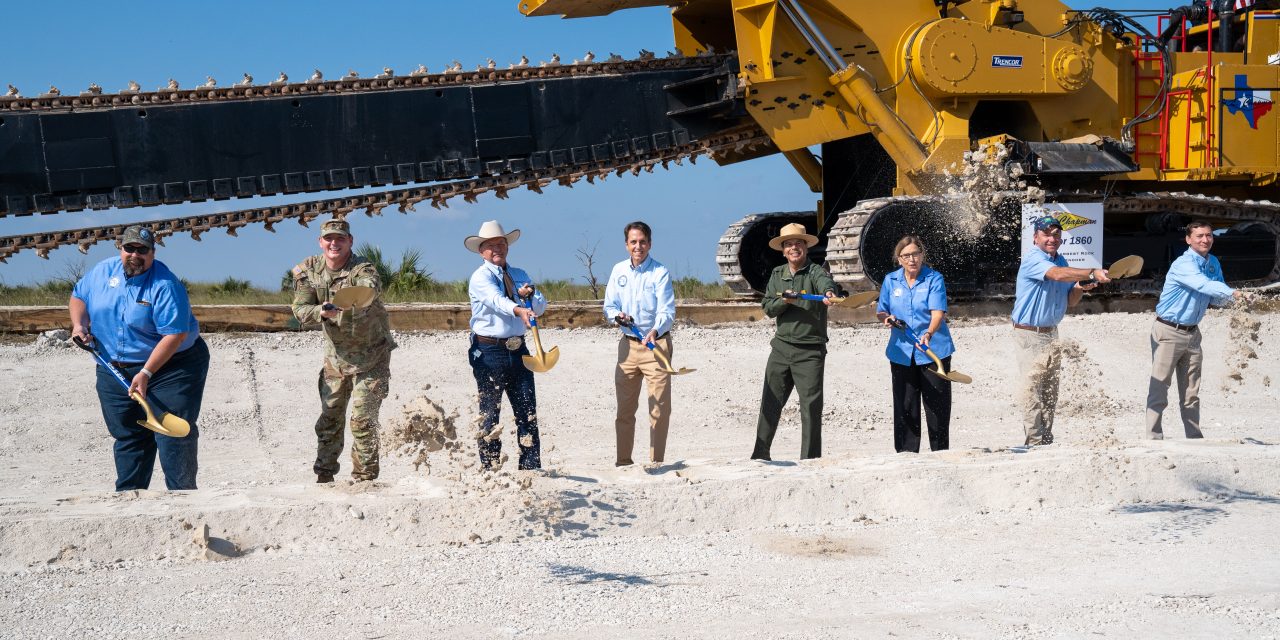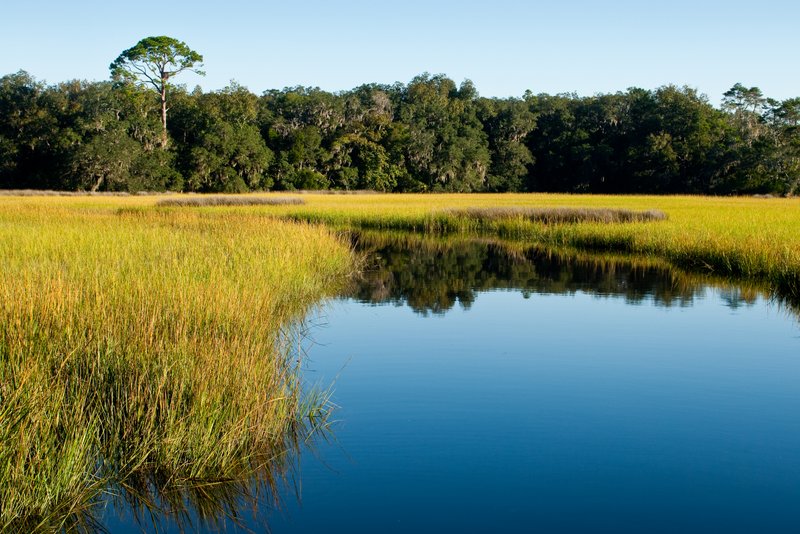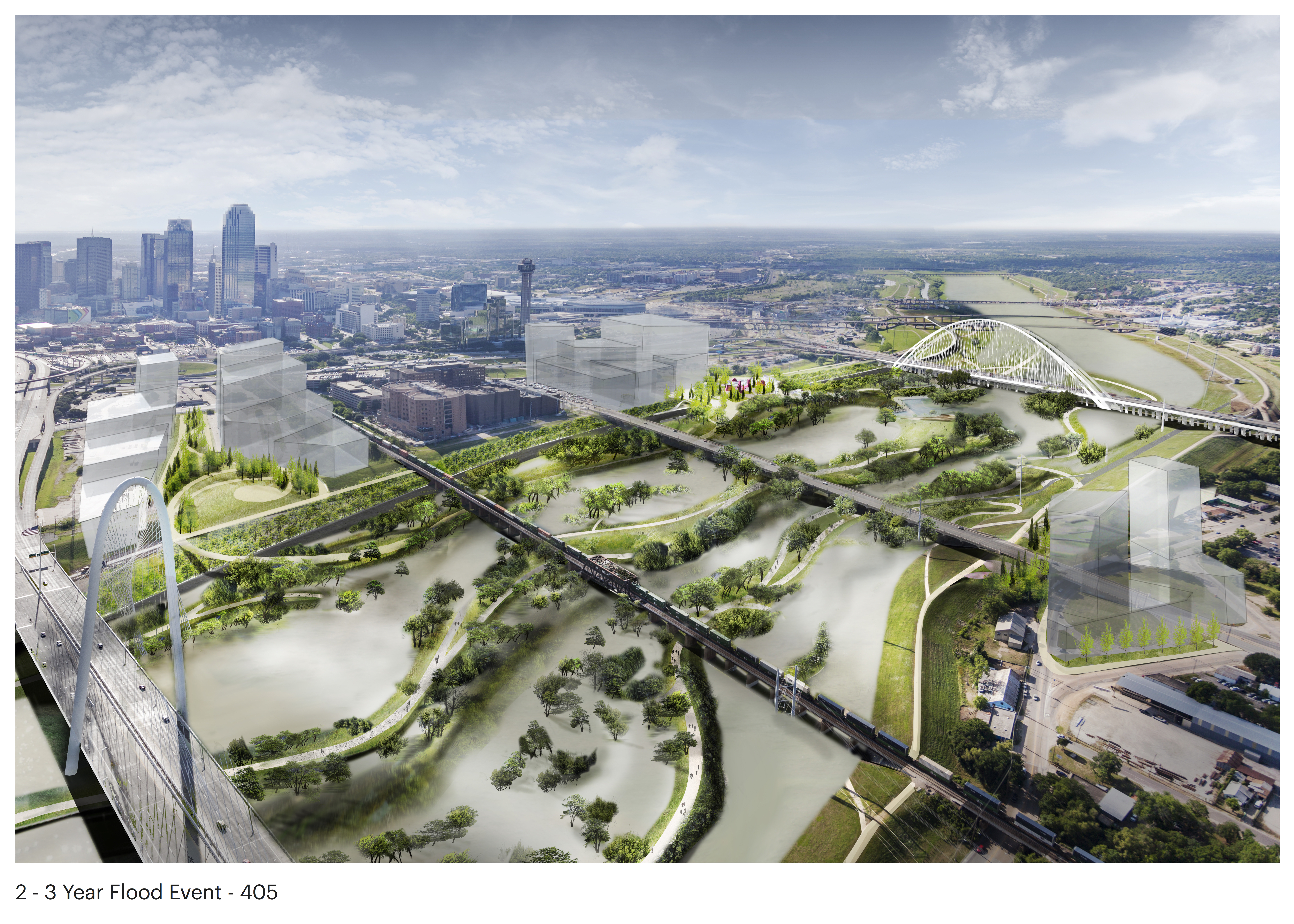An 8-km (5-mi) barrier reaching as deep as 18 m (60 ft) underground is the latest tool South Florida water managers are using to combat chronic flooding in the Everglades region. Representatives from the South Florida Water Management District (SFWMD), the U.S. Army Corps of Engineers (ACE), and other partnering organizations broke ground on the project, known as a seepage barrier wall, on December 12.
The new stretch of seepage barrier wall will work in tandem with other nearby infrastructure to restore the natural, southward course of water in Everglades National Park toward Florida Bay. Steady development between Lake Okeechobee and Florida Bay throughout the 20th century has disrupted that natural course. The development has sent water to populated areas in other directions during heavy downpours while also impairing water quality, aquifer storage, and biodiversity in the Everglades ecosystem.
“This seepage wall is essential to keeping water in Everglades National Park while protecting adjacent neighborhoods,” Eric Eikenberg, CEO of The Everglades Foundation (Palmetto Bay, Florida), said in a release announcing the groundbreaking. “This feature will also allow us to send water south to Florida Bay where it belongs.”
Protecting the ‘8.5 Square Mile Area’
Where the Everglades meet the western border of Miami-Dade County, a low-lying, agricultural community known as the 8.5 Square Mile Area (8.5 SMA) sits within the path of least resistance for Everglades floodwaters. The community, prone to severe flooding since its settlement, is surrounded by a series of levees along its perimeter. However, because of the permeable soils on which the levees sit, water during heavy storms often seeps beneath them and causes nuisance flooding in the 8.5 SMA.
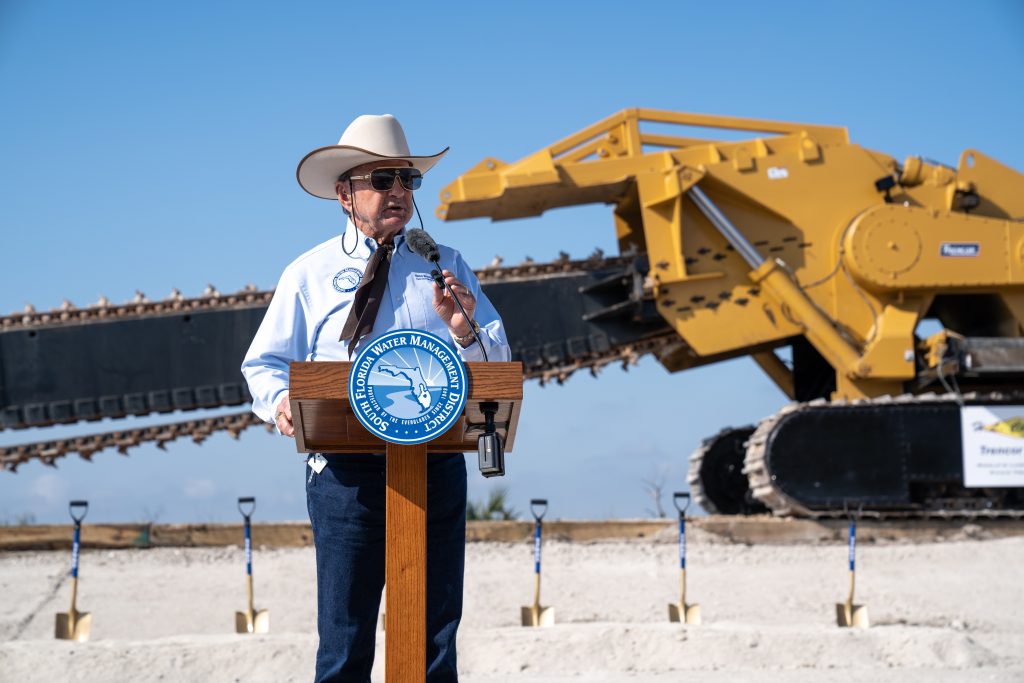
Early last fall, construction concluded on a 3.7-km (2.3-mi) stretch of seepage barrier wall beneath the L-357 Levee, which marks the northern border of the 8.5 SMA. According to SFWMD representatives, this initial phase of the seepage barrier wall project is already preventing stormwater flooding in the region it serves.
“We completed Phase I of this project in September [2022], and now just three months later, we are now breaking ground on the next phase that helps keep even more water in Everglades National Park,” said “Alligator Ron” Bergeron, SFWMD Governing Board Member, in a statement. “By keeping water in the park where it’s needed, water stays away from nearby neighborhoods. Thank you to our partners at the U.S. Army Corps of Engineers for working with us to expedite this project to benefit the global Everglades.”
According to project details from ACE, the seepage barrier wall segments now under construction will consist of a mixture of soil, cement, and bentonite slurry meant to minimize soil permeability with minimal effects on geological function. Each barrier will have an approximate thickness of 71 cm (28 in.) and run along the center of the L-357 Levee.
The seepage barrier wall is the latest effort under the auspices of the Central Everglades Planning Project (CEPP). This project is a long-term, interjurisdictional infrastructure campaign led by ACE and SFWMD that aims to send an additional 456 million m3 (370,000 ac-ft) of water per year through the Everglades and into the Atlantic Ocean.
Support From Tallahassee
The seepage wall is one of several infrastructure projects funded via Florida Executive Order 19-12, signed in January 2019 by Governor Ron DeSantis. Builders expect the wall extension effort to take approximately 2 years to complete.
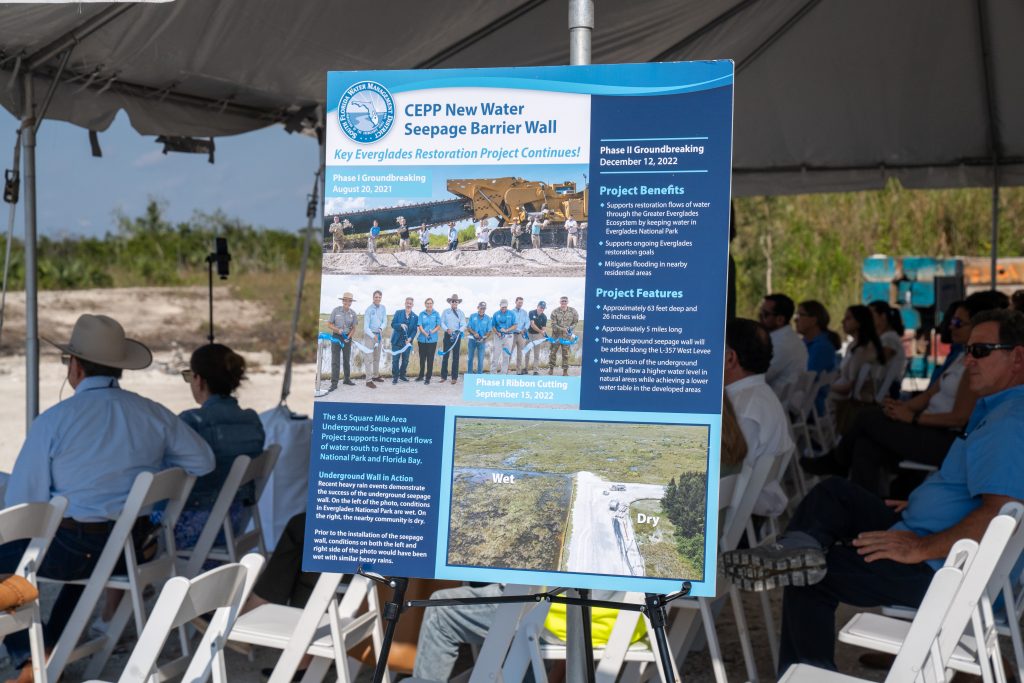
Executive Order 19-12 allocated USD $2.5 billion in state funding toward Everglades restoration and associated water quality projects over 4 years. At the time, this was the largest investment in an environmental project in Florida’s history.
Another major CEPP initiative supported by Executive Order 19-12 is the Everglades Agricultural Area Storage Reservoir Project. The effort, which is underway now, includes construction of a 240,000-ac-ft reservoir that will collect excess water from Lake Okeechobee, supported by a 6,500-ac stormwater treatment area intended to protect water quality and discourage flooding. It also features a series of new canals and conveyance systems.
In January 2023, DeSantis signed Florida Executive Order 23-06. This order directs the Florida Department of Environmental Protection to allocate an annual USD $3.5 billion through 2026 toward additional Everglades water management projects. It also calls on SFWMD to expedite restoration projects previously authorized as part of CEPP and other long-term Everglades programs.
Top image courtesy of South Florida Water Management District

ABOUT THE AUTHOR
Justin Jacques is editor of Stormwater Report and a staff member of the Water Environment Federation (WEF). In addition to writing for WEF’s online publications, he also contributes to Water Environment & Technology magazine. Contact him at jjacques@wef.org.

